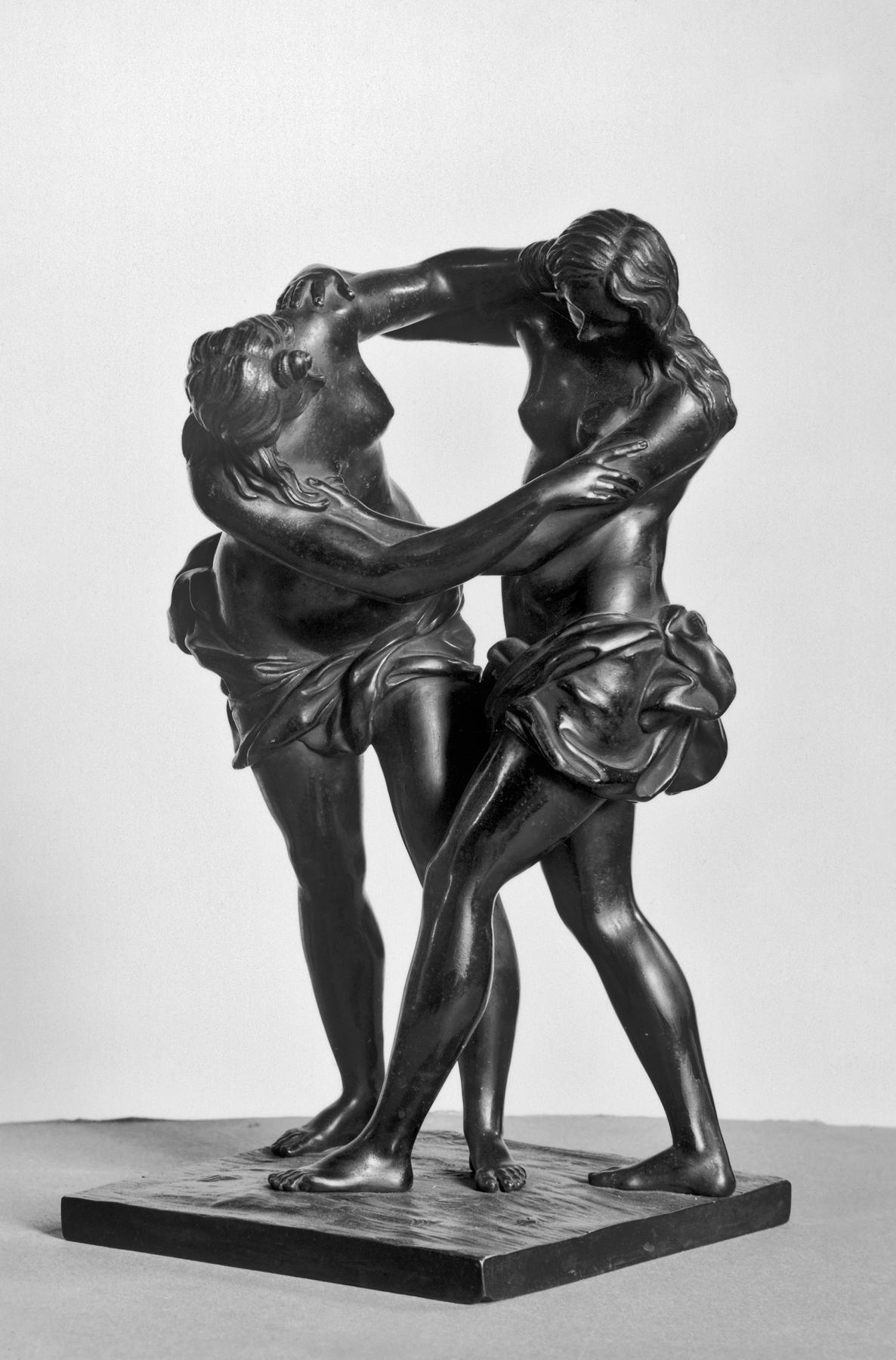Two Women Wrestling
(Baroque Europe )
Wrestling matches between scantily clad women as well as men were a form of court entertainment in 17th-century Italy. Casts of "Two Women Wrestling" were sometimes paired with "Two Men Wrestling." The subject of women wrestling is not ancient, and a life-size statue would shock, but the naturalism, drama, and veiled eroticism are suited to the small scale appropriate to a collector's study. It exemplifies the impact of the tastes of the collector on the expanded subject matter of the Baroque. The natural tension of the conflict leads the eye around the wrestlers.
Chief sculptor to the grand duke of Tuscany, Tacca maintained the Florentine workshop that had been Giovanni Bologna's (see Allegory of Architecture 54.689), adapting the svelte, complex, elongated figures of the latter and his father Pietro Tacca (1577-1640) to the demands of greater drama in the mid to later 1600s. No small bronzes are documented as having been created by him, but several are attributed to him by comparison with larger, signed pieces.
Provenance
Provenance (from the French provenir, 'to come from/forth') is the chronology of the ownership, custody, or location of a historical object.
Jacques Seligmann, Paris, by purchase; Henry Walters, Baltimore, 1910, by purchase; Walters Art Museum, 1931, by bequest.
Exhibitions
| 1971-1972 | World of Wonder. The Walters Art Gallery, Baltimore. |
Conservation
| Date | Description | Narrative |
|---|---|---|
| 11/1/1958 | Treatment | cleaned |
| 7/15/1974 | Treatment | cleaned |
| 7/15/1974 | Treatment | cleaned; examined for condition |
| 11/3/1976 | Treatment | other |
| 12/16/1987 | Examination | examined for condition |
Geographies
Italy, Florence (Place of Origin)
Measurements
5 5/8 x 2 13/16 in. (14.3 x 7.2 cm)
Credit Line
Acquired by Henry Walters
Location in Museum
Accession Number
In libraries, galleries, museums, and archives, an accession number is a unique identifier assigned to each object in the collection.
In libraries, galleries, museums, and archives, an accession number is a unique identifier assigned to each object in the collection.
54.647


